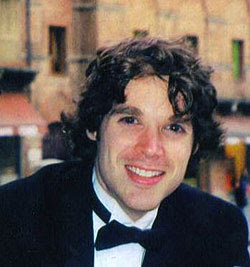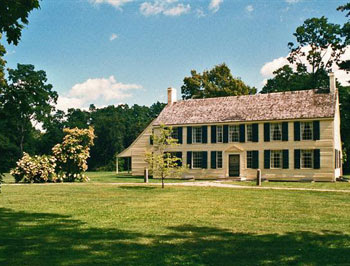 The Adirondack History Center Museum, located in the old school building at the corner of Route 9N and Hand Avenue in Elizabethtown, Essex County, has announced it’s 2010 Season of events and exhibits.
The Adirondack History Center Museum, located in the old school building at the corner of Route 9N and Hand Avenue in Elizabethtown, Essex County, has announced it’s 2010 Season of events and exhibits.
In addition to the season’s events, the museum displays artifacts from over two centuries of life in Essex County and the central Adirondacks. The diverse collection includes 18th century artifacts, an 1887 Concord stagecoach, an iron bobsled from the 1932 Olympic Games, a 58 foot Fire Observation Tower to climb, a colonial garden patterned after the gardens of Hampton Court, England and Colonial Williamsburg, and more.
The Museum is open 10am – 5pm, 7 days a week from late May through mid-October. The Brewster Library is open all year by appointment only. Admission: Adults $5, Seniors $4, Students $2. Ages 6 and under are free.
The 2010 Schedule includes:
Exhibits
A Sign of the Times May 29- October 31
Curators have mined the museum’s collection, scoured the region, and called upon the citizens of Essex County to gather SIGNS! The exhibit focuses on SIGNS – all things that convey ideas, information, commands, designations or directions. Displayed wall to wall and ceiling to floor this exhibit prompts the viewer to discuss and ponder facts, purposes, qualities, and gestures conveyed by signs.
Swan Furniture June 19 – October 31
This exhibit highlights the Swans and their craftsmanship as important symbols of Westport and Wadhams cultural heritage. The furniture places the Swans into historical context as representatives of our human landscape. A unique blend of pieces provides visitors an opportunity to reflect on the furniture as art objects and artifacts in a museum setting.
ACNA Cover Art Show Sept. 20 – October 31
The 23rd year of the Arts Council for the Northern Adirondacks (ACNA) Cover Art Show featuring local artists. Thirty donated artworks for a Silent Auction are included in the exhibition. The winning Cover Art show piece is to be raffled at “Field, Forest and Stream Day” on September 25th, 2010.
Events
Can History be Reconciled? A Conversation on Compassion & Courage
July 9, 4pm
Whether we’re reading the esoteric histories of others or dealing with our own, some issues are difficult to grasp and process. Don Papson, President of the North Country Underground Railroad Historical Association, will engage the audience in a discussion on compassion and courage in light of oppression, slavery and liberation.
Lecture: Captain Brown’s Birthday Party by Amy Godine
July 11, 4 pm
From 1922 into the 1960s, black pilgrims from northern cities joined ranks with white Adirondackers to honor the May 9 birthday of the militant abolitionist John Brown with speeches, concerts, sermons and prayers, earning Lake Placid a reputation as an oasis of interracial tranquility in the age of Jim Crow. How was each group able to find common cause in John Brown? How did each group use the other to promote its own agenda? And whose version of John Brown prevails at his home and gravesite in North Elba, a state-managed historic site since 1897? Join us to hear Historian Amy Godine answer these questions and examine the struggle it both enabled and concealed over John Brown’s public image and the meaning of freedom itself.
Fundraiser: Elizabethtown Historic Slide Show for the Town Hall Stained Glass Window Project
July 18, 4 pm
Back with added photographs and materials, local historian, Margaret Bartley, is offering the Elizabethtown Historic Slide Show for a second year as part of the Elizabethtown Day celebration. Proceeds from this event benefit the restoration of the Elizabethtown Town Hall stained glass windows, a project of Historic Pleasant Valley and the Essex County Historical Society. Any and all donations are welcome.
Museum Benefit: Come as you ART
July 24, 8pm
An evening of dance, delicacies, and expressive dress. Design and create your own clothing. Let your artistic side or a work of art inspire your attire. Music provided by the Chrome Cowboys.
Performance: Bits & Pieces
About a Bridge
Fridays: July 30, Aug 6 & 13, 11am / Sunday August 1, 4pm
This theatrical elegy weaves together voices from the life of the Champlain Bridge.
Lecture: Asanath Nicholson: Adirondack Teacher and World Humanitarian by Maureen Murphy
August 8, 4 pm
Maureen Murphy, Professor of Curriculum and Teaching in the School of Education in Health and Human Services at Hofstra University conveys the history of Asenath Hatch Nicholson, an early 19th century woman, schoolteacher, health reformer, traveler, writer, evangelist, social worker and peace activist. Asenath Hatch Nicholson (1792-1855), born in Chelsea, Vermont, made her way across Lake Champlain to Elizabethtown, New York. At age 21, she started a boarding school on Water Street for students from the town and neighboring farms. While in Elizabethtown, she met her husband Norman Nicholson, a local widower with a young family. The couple moved to New York City where Nicholson became a disciple of the health reformer Sylvester Graham. Nicholson opened a Grahamite boarding house and worked among the poor. After she was widowed, she set out from New York on a fifteen-month visit to Ireland to “investigate the condition of the Irish poor,” reading the Bible to country people, and sharing their hospitality, leaving us with a glimpse of Ireland on the eve of the Great Irish Famine in her book Ireland’s Welcome to the Stranger (1847).
Festival: Field, Forest & Stream Sept 25, 10-3:30
A harvest festival sponsored by the Arts Council for the Northern Adirondacks and the Elizabethtown-Lewis Chamber of Commerce featuring demonstrations and exhibits by regional craftspeople, antique dealers, storytellers and musical performances.
 A new law that sets up a process for state recognition of Native American tribes in Vermont has revised the makeup of the Vermont Commission on Native American Affairs and has that panel seeking nine new members.
A new law that sets up a process for state recognition of Native American tribes in Vermont has revised the makeup of the Vermont Commission on Native American Affairs and has that panel seeking nine new members.







